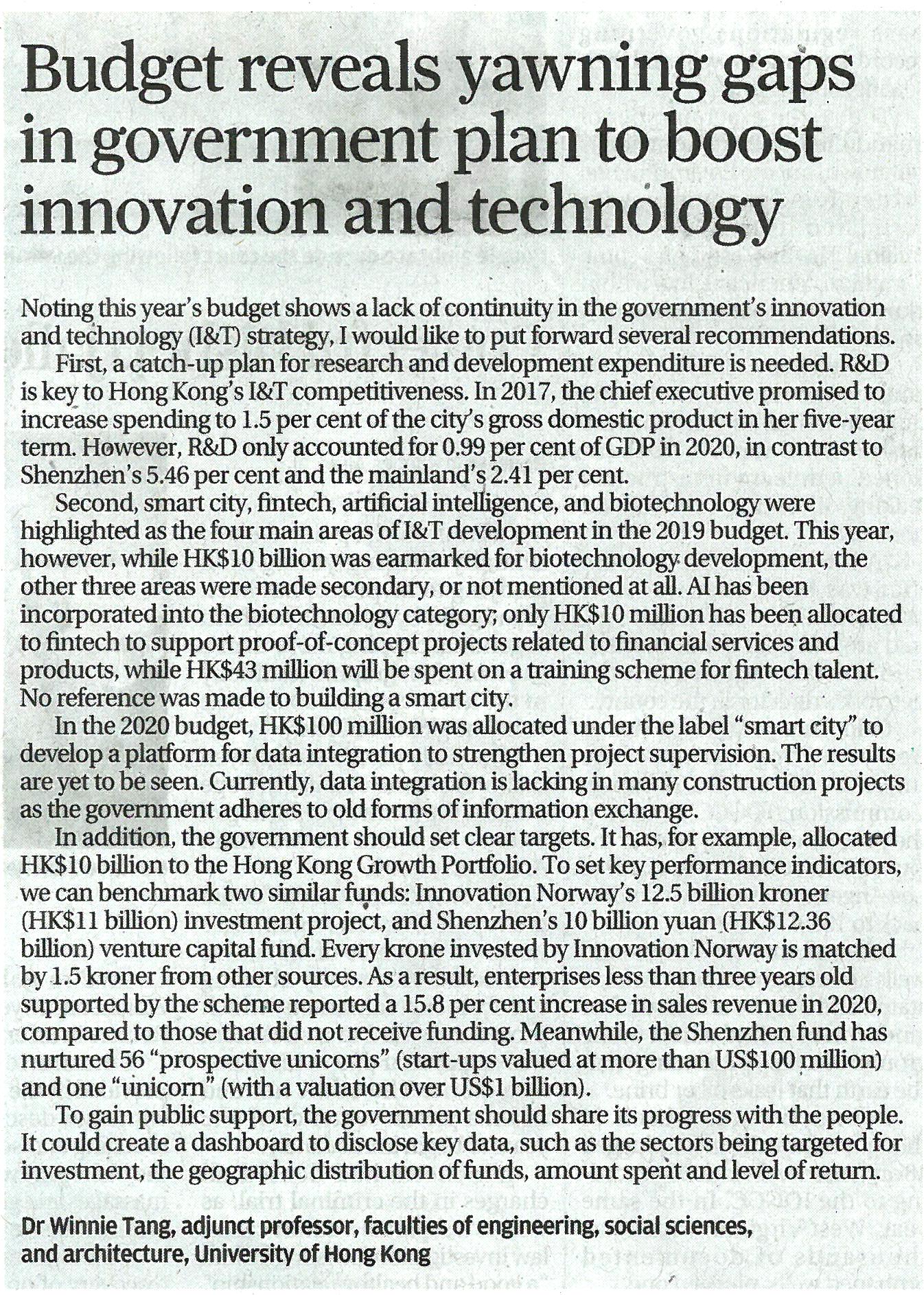網上版請按此

Budget reveals yawning gaps in government plan to boost innovation and technology
Noting this year's budget shows a lack of continuity in the government's innovation and technology (I&T) strategy, I would like to put forward several recommendations.
First, a catch-up plan for research and development expenditure is needed. R&D is key to Hong Kong's I&T competitiveness. In 2017, the chief executive promised to increase spending to 1.5 per cent of the city's gross domestic product in her five-year term. However, R&D only accounted for 0.99 per cent of GDP in 2020, in contrast to Shenzhen's 5.46 per cent and the mainland's 2.41 per cent.
Second, smart city, fintech, artificial intelligence, and biotechnology were highlighted as the four main areas of I&T development in the 2019 budget. This year, however, while HK$10 billion was earmarked for biotechnology development, the other three areas were made secondary, or not mentioned at all. AI has been incorporated into the biotechnology category; only HK$10 million has been allocated to fintech to support proof-of-concept projects related to financial services and products, while HK$43 million will be spent on a training scheme for fintech talent. No reference was made to building a smart city.
In the 2020 budget, HK$100 million was allocated under the label "smart city" to develop a platform for data integration to strengthen project supervision. The results are yet to be seen. Currently, data integration is lacking in many construction projects as the government adheres to old forms of information exchange.
In addition, the government should set clear targets. It has, for example, allocated HK$10 billion to the Hong Kong Growth Portfolio. To set key performance indicators, we can benchmark two similar funds: Innovation Norway’s 12.5 billion kroner (HK$11 billion) investment project, and Shenzhen’s 10 billion yuan (HK$12.36 billion) venture capital fund. Every krone invested by Innovation Norway is matched by 1.5 kroner from other sources. As a result, enterprises less than three years old supported by the scheme reported a 15.8 per cent increase in sales revenue in 2020, compared to those that did not receive funding. Meanwhile, the Shenzhen fund has nurtured 56 "prospective unicorns" (start-ups valued at more than US$100 million) and one "unicorn" (with a valuation over US$1 billion).
To gain public support, the government should share its progress with the people. It could create a dashboard to disclose key data, such as the sectors being targeted for investment, the geographic distribution of funds, amount spent and level of return.
Dr. Winnie Tang
Adjunct Professor, Department of Computer Science, Faculty of Engineering; Department of Geography, Faculty of Social Sciences; and Faculty of Architecture, The University of Hong Kong